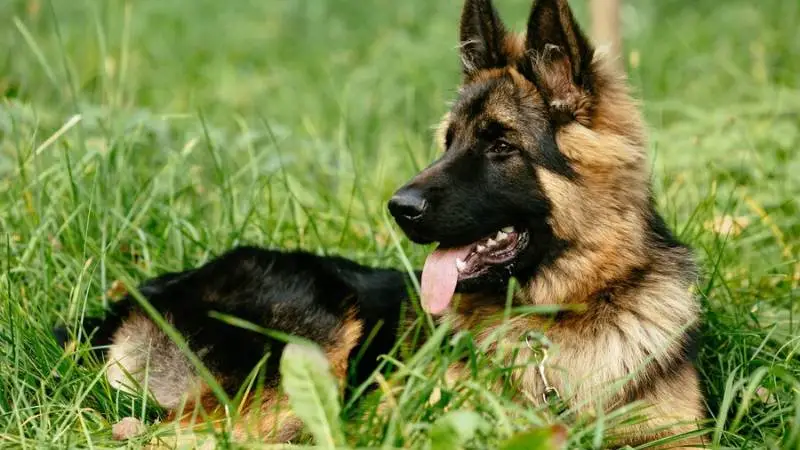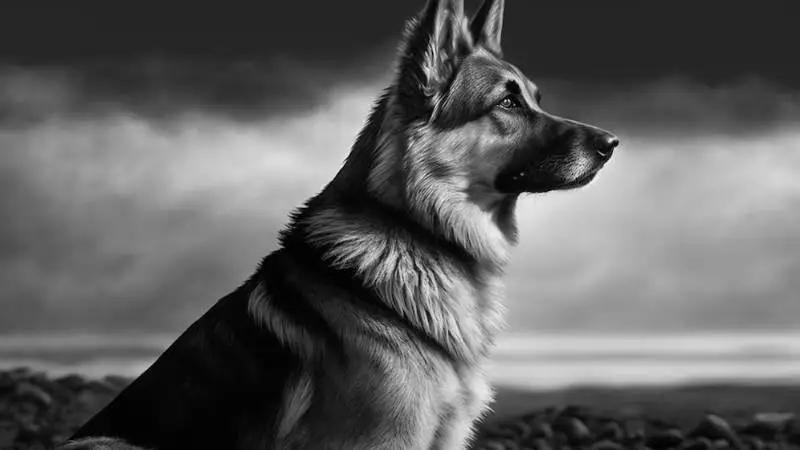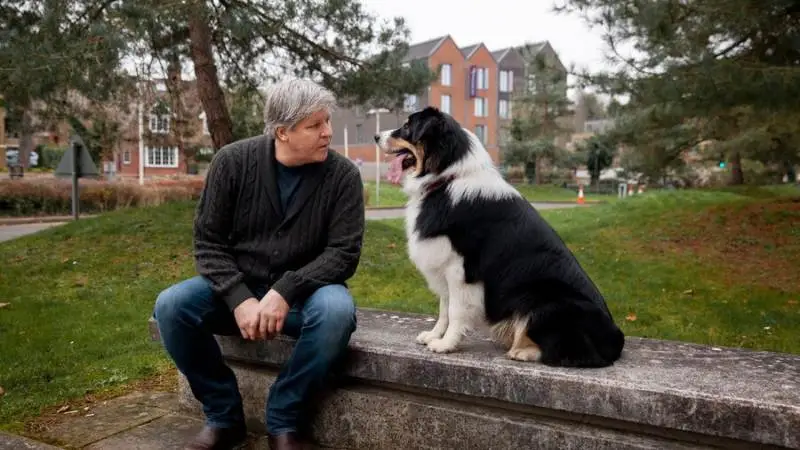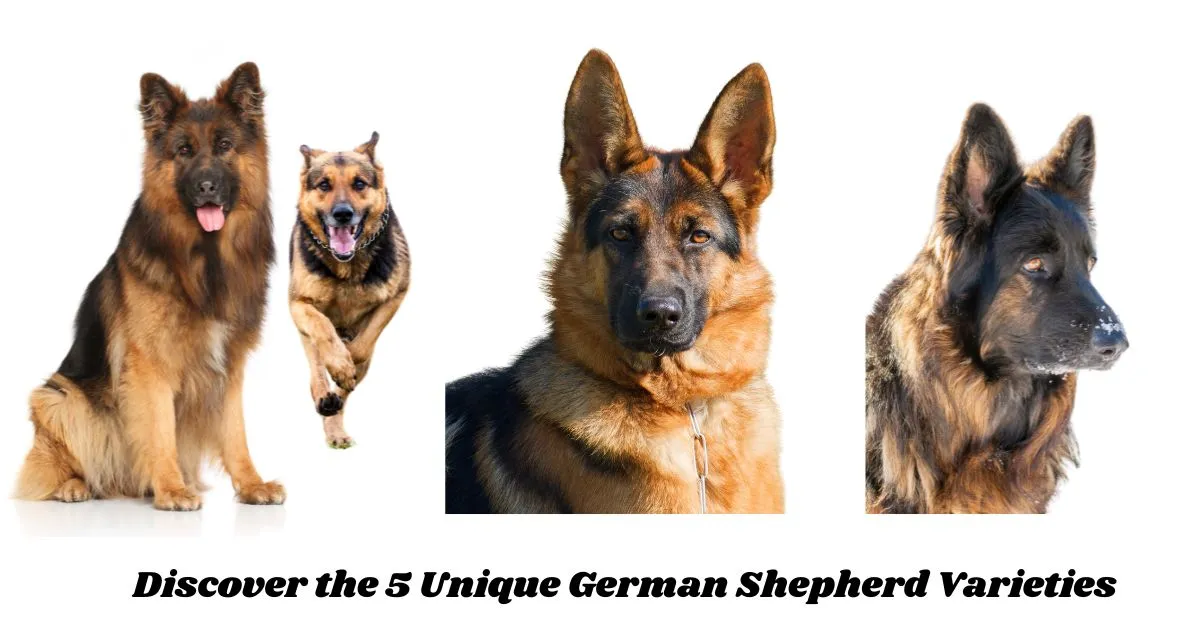They are unveiling 5 unique German Shepherd varieties! These intelligent, loyal dogs come in five excellent types, each with unique traits. We’ll explore their looks, personalities, and what makes them perfect for specific roles—family companions, working partners, or show stars. Get ready to discover the fascinating diversity within this beloved breed.
Key terms such as “German Shepherd,” “varieties,” “characteristics,” “intelligence,” “loyalty,” and “versatility” are central to our discussion. Understanding these key aspects will help anyone, from potential dog owners to canine enthusiasts, grasp the diversity within this breed, make informed decisions, or appreciate the depth of this breed’s lineage.
Whether you’re interested in a family companion, a working dog, or a show dog, these five German Shepherd varieties offer a fascinating glimpse into the breed’s adaptability and multifaceted nature.
History
The world of German Shepherds is vast and varied, with the breed’s evolution since its late 1800s inception by Max von Stephanitz resulting in several distinct types. Initially bred for intelligence and workability, the German Shepherd has diversified into five main types, each with unique characteristics and roles.
This article explores these types, from the well-known to the less-known, and demystifies the breed’s varying coat colors, aiding in the identification and understanding of each German Shepherd variety.
Here’s a summarized table to illustrate the key points:
| Aspect | Details |
| Breed Origin | Developed in the late 1800s by Max von Stephanitz. |
| The Registered Dog | Horand von Grafrath, setting the breed standard. |
| Evolution | Led to diverse types with specific traits and roles. |
| Types Covered | 5 main types, from universally accepted to less known. |
| Coat Colors | Various, sometimes causing identification challenges. |
5 Unique German Shepherd Varieties
- East German shepherd working line
- West German shepherd working line
- Czech German Shepherd
- American/Canadian Show Line
- West German Show Line (European Showline)
Let’s break down each type to see what makes them stand out.
East German shepherd working line

The East German shepherd Working Line, also known as DDR (Deutsches Demokratische Republik), was developed in East Germany after World War II and maintained a strict breeding standard focusing on health, stamina, and working ability. These dogs were specifically bred for border patrol and military use, meaning they needed endurance, loyalty, and a high tolerance for harsh conditions.
Physical Characteristics:
East German Working Line German Shepherds tend to have a stockier build, with a straight back and a more substantial frame than other lines. They generally have a darker coat, typically black and sable, although some variations can exist.
Personality and temperament:
These dogs are highly trainable, loyal, and have a calm disposition, especially compared to other working lines. Due to their strict breeding practices, East German Working Lines often have lower health issues, as breeders prioritized their durability and health above all.
Real-World Applications:
These German Shepherds excel in fields that require intelligence and endurance, such as police and military work, as well as search and rescue. An example of their impact can be seen in the Berlin Wall era, where DDR German Shepherds patrolled the East German borders due to their powerful build, keen senses, and resilience.
Here’s a summarized table to illustrate the key points:
| Feature | Description |
| Origin | It is well built with a tan and black coat, embodying the classic look. |
| Appearance | Well-built with a tan and black coat, embodying the classic look. |
| Traits | It is well built with a tan and black coat, embodying the classic look. |
| Roles | Service, police work, and family companionship. |
| Characteristics | Trainable, obedient, and with strong protective instincts. |
West German shepherd working line

The West German Working Line German Shepherds are considered the most versatile and widely accepted working-line GSDs. Their breeding standard focuses on a balance between working capability and physical appearance, resulting in a dog that’s excellent for both work and companionship.
Physical Characteristics:
West German working lines are slightly less robust than their East German counterparts, with a lighter frame and a pronounced athletic structure. Their coats are commonly black, though black and tan are also common.
Personality and temperament:
These German Shepherds are highly driven, excelling in agility and obedience. While they’re loyal and protective, they also have a friendly demeanor, making them popular among families looking for a guard dog.
Real-World Applications:
The West German Working Line is used across the globe in various roles, from police work to therapy and service dog roles. Their combination of strength, agility, and intelligence means they’re often selected for international canine competitions. For example, some of the top-performing dogs in competitions like Schutzhund (a dog sport testing tracking, obedience, and protection) are West German Working Line GSDs, proving their versatility.
Here’s a summarized table to illustrate the key points:
| Feature | Description |
| Origin | It is ideal for show rings and as family companions. |
| Appearance | Sloped back, well-defined angles, and varied colors. |
| Traits | Friendly, calm, with less working drive. |
| Roles | Ideal for show rings and as family companions. |
| Characteristics | Prioritizes physical appearance, meeting show standards. |
Czech German Shepherd

Czech German Shepherds have a compact yet muscular build, often with dark sable coats. They have a wolf-like appearance and tend to have a leaner structure compared to East or West German working lines. Their build supports agility and endurance, making them ideal for work that requires both.
Personality and temperament:
Czech German Shepherds are fiercely loyal and protective, with a strong prey drive and energy level. These dogs have a natural inclination for tracking and are known for their fearless temperament.
Real-World Applications:
Due to their agility and instinctive protection drive, Czech German Shepherds are often used in special operations and search-and-rescue missions. In a notable case, a Czech German Shepherd named K9 Jary was used in a U.S. police force, excelling in narcotics detection and protection work, highlighting their capability as driven and effective working dogs.
Here’s a summarized table to illustrate the key points:
| Feature | Description |
| Breeding Goal | Balance between working ability and physical appearance. |
| Conformation | Functional structure with less back slope for agility. |
| Coat | Varied colors, with rich pigments and classic patterns. |
| Temperament | Suitable for service, search and rescue, sports, and family pets. |
| Roles | Ideal for family pets, sports, search and rescue, and service. |
| Characteristics | It combines show ring beauty with robust health and working ability. |
American/Canadian Show Line

The American and Canadian show lines differ significantly from working lines, as they have been bred primarily for appearance and conform to Kennel Club standards, particularly in the United States and Canada. Their sleek and elegant look has made them popular show dogs, and they’re often seen in competition rings rather than police or military work.
Physical Characteristics:
American/Canadian Show Line German Shepherds have a distinctive sloping back, often criticized by working line enthusiasts for not being functional for strenuous activities. Their coats are typically black and tan, though some red hues may also appear. These GSDs are usually larger than the working lines and have a more exaggerated angulation in their hindquarters.
Personality and temperament:
These German Shepherds are usually less intense than their working-line counterparts. They’re calmer and have a more laid-back disposition, making them ideal for families looking for a companion pet rather than a working dog. However, they still retain the loyalty and intelligence characteristic of the breed.
Real-World Applications:
While American/Canadian Show Lines are less common in demanding work environments, they still serve as loyal family pets and therapy dogs. A show-line GSD named Rin Tin Tin, famous in the 1920s, became a film and television star, demonstrating how these types of GSDs can adapt well to calmer roles that require loyalty and companionship.
Here’s a summarized table to illustrate the key points:
| Feature | Description |
| Origin | I was born in East Germany for demanding work roles. |
| Build | Sturdy, muscular, with a dense coat, often dark. |
| Purpose | Developed for tasks like border patrol; highly disciplined and alert. |
| Temperament | Intelligent, loyal, and protective, with strong guarding instincts. |
| Suitability | Ideal for work requiring endurance and resilience, also a dependable companion. |
| Characteristics | Known for its seriousness and strong work ethic, it is suitable for demanding environments. |
West German Show Line (European Showline) German Shepherd

The West German Show Line, often referred to as the European Showline, merges the aesthetic standards of show dogs with the capability of working dogs. Originating in Germany, these dogs have a balanced approach to beauty and functionality, meeting the breed standard for German Shepherds without sacrificing their working potential.
Physical Characteristics:
West German show lines are visually striking, with a balanced structure and a slight slope in their back (though not as pronounced as the American show line). Their coat color often includes rich red and black combinations, making them particularly eye-catching.
Personality and temperament:
West German show lines are known for their sound temperament and adaptability. They’re friendly, confident, and approachable, making them excellent family dogs, though they retain enough drive to perform various tasks if needed.
Real-World Applications:
In Europe, these German Shepherds are popular for protection sports and obedience competitions. Their well-rounded personalities allow them to succeed in multiple settings, from family environments to work fields that require agility and loyalty. For example, a West German Show Line GSD named Odin won several European dog shows due to his beautiful structure and obedience abilities, proving the versatility of this type of GSD.
Here’s a summarized table to illustrate the key points:
| Feature | Description |
| Origin | Bred in the Czech Republic for demanding work. |
| Build | Powerful and robust, suited for intense activities. |
| Roles | It is used in military and police work due to its high trainability and work drive. |
| Temperament | Intelligent, energetic, and protective. |
| Characteristics | Known for darker coats and strong loyalty, it is ideal for active and working environments. |
Selecting the Right German Shepherd
Choosing a German Shepherd depends on your lifestyle and the role you envision for the dog. Here’s a quick guide to help decide which of these types of GSD may be the best fit for you:
For Working Roles:
East German Working Line or Czech German Shepherds may be ideal due to their drive, stamina, and history in police and military work.
For Family Pets:
West German Show Line and American/Canadian Show Line German Shepherds tend to have a more relaxed demeanor, making them suitable for companionship.
For Versatility:
If you’re looking for a GSD that combines the beauty of a show dog with some working capability, the West German Show Line could be an excellent choice.
Each type has its own set of strengths and characteristics, and understanding these can help potential owners make an informed decision that aligns with their needs and lifestyle.
The differences and considerations
German Shepherd types vary in appearance and abilities, tailored to their roles. West German working lines are sturdy and functional, with darker coats for demanding work. Czech Working Lines have a strong, muscular build with sable or black coats, bred for endurance and strength in tasks like border patrol.
European show lines possess a more sloped back and refined appearance, with richly colored coats for show standards, yet remain intelligent and trainable. While all lines share intelligence, loyalty, and adaptability, working lines exhibit a stronger work drive, suited for active tasks.
In contrast, European show lines are more balanced, ideal for family life and competitive showing, merging aesthetics with functionality.
Is it a good idea to adopt a German Shepherd?
Adopting a German Shepherd requires understanding their need for mental and physical activity, due to their high intelligence and energy. Potential owners should commit to regular training, socialization, and exercise.
These dogs are ideal for active individuals or families, thriving in environments where they can engage in activities like training and agility. While German Shepherds are loyal, protective, and excellent as family pets, they need consistent care and training, especially early on, to prevent behavioral issues.
It’s vital to assess whether one can meet the demands of raising a German Shepherd to ensure a positive relationship.
Conclusion
Choosing between the German Shepherd types—West German Working, Czech Working, and European Show Lines—requires understanding their traits, temperament, and needs. Prospective owners should consider their lifestyle and what they seek in a dog.
Those wanting an energetic, work-focused dog might prefer the working lines, while others desiring a mix of beauty and functionality could opt for the European Show Line, especially for dog shows. All German Shepherds need love, discipline, and mental and physical activity. An informed decision ensures a fulfilling relationship, highlighting the breed’s loyalty and excellence.
FAQs
Which breed of German Shepherd is best?
The best breed of German Shepherd depends on your purpose. Working line German Shepherds are ideal for roles that demand strength, intelligence, and stamina—like police or military work. Show line German Shepherds, especially the American and European lines, are bred to meet appearance and temperament standards, making them great for families and dog shows. For first-time or casual dog owners, the American show line is often preferred due to its more even temperament and ease of training.
How many types of German Shepherds are there?
There are two primary types of German Shepherds:
Working Line – bred for performance, endurance, and intelligence.
Show Line – bred for beauty, structure, and calm temperament.
These two categories are further divided into several bloodlines based on their origin and purpose.
What are the 7 classifications of German Shepherds?
The 7 recognized classifications or lines of German Shepherds include:
American Show Line
West German Show Line
West German Working Line
East German (DDR) Working Line
Czech Working Line
British Line
Panda German Shepherd (unique due to its rare coloring)
Each classification is known for specific traits in temperament, build, and purposeranging from family companionship to elite-level working tasks.
What is the rarest type of German Shepherd?
The Panda German Shepherd is considered the rarest type. This unique variation is marked by a distinct piebald pattern white markings mixed with the typical black and tan coat. Its rare appearance results from a genetic mutation, not crossbreeding, and is purely aesthetic while retaining the same intelligence and behavior as standard German Shepherds.
